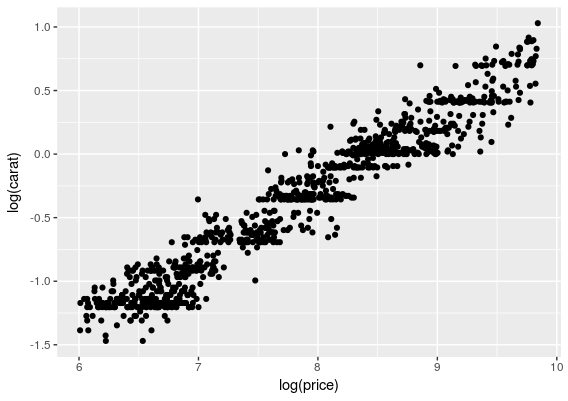I am trying to understand the benefits of transformation functions. Mainly, I am trying to understand the kick / the motivation to even attempt a transformation function on a sample data being analyzed. So, below I have 2 scatter plots of the same dataset.
The first plot is carat v/s price:
The second plots is log(carat) v/s log(price):
Yeah, it is true that the second plot gives a more straight line as compared to the first scatter plot. But can we deduce something here? Could you give an example/case where the second graph could be useful? One thing that shadows my approach towards transformation is that, why would anyone want to study log(carat) vs log(price), when in real life, carat and price occur?


